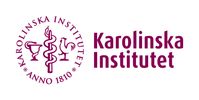Attempted suicide among young people can be reduced by 50 percent
[PRESS RELEASE 01/09/2015] A new study published in journal The Lancet outlines a programme for preventing suicidality among young people. The results provide strong endorsement for a method whereby school students learn to discover signs of mental ill-health in themselves and their friends, while they are also trained to understand, interpret and manage challenging emotions. The European study was led from Karolinska Institutet in Sweden, and researchers now hope to see the method reach a large number of young people in European schools.

At a global level, suicide is the second leading cause of death in the age group 15-29. Only road traffic accidents cause more fatalities in this age group. At the same time, there has been a lack of knowledge about which strategy is best for preventing suicidal behaviours in young people. A major EU-funded study which embraces more than 11,000 school students from 168 schools in ten EU countries has therefore evaluated different strategies for prevention of suicidality in young people.
In the study, schools were randomized to receive one of three suicide prevention models or alternatively become part of a control group. The three methods were:
- An US method whereby teachers and other school personnel are trained to recognise signs of suicidality and motivate the students to seek help.
- A classroom screening test where psychiatrists, psychologists and counsellors identify students with mental health problems and refer them to treatment.
- The Awareness Programme which was developed by researchers at Karolinska Institutet in Sweden and Columbia University in the USA. It is a method whereby students learn both to recognise signs of mental health problems and cultivate good mental health with short lectures, posters in classroom environments and a more comprehensive brochure to take home. Students were also invited to take part in supervised role-play where they could explore their emotions and learn coping strategies for a variety of difficult life situations that could lead to suicidal behaviours. The educational programme lasted five hours over four weeks.
- No measures were taken in the control group except for putting up the posters that were part of the Awareness Programme in the classrooms.
The study provides results showing the effectiveness of the Awareness Programme - which gives students a tool to exercise influence over their mental health - in preventing attempted suicide and serious suicidal thoughts with plans how to commit suicide. One year after completing the programme, the number of attempted suicides and serious suicidal thoughts and planned suicides in this group was 50% lower compared with the control group. In the two other groups, where the responsibility for the students' mental health rested exclusively with the teacher or professional health care personnel, the proportion was the same as in the control group.
”This study provides much-needed evidence for the effectiveness of universal school-based public health programmes designed for students. The study shows that it possible to implement suicide prevention programmes in schools with good results. Now we can take the step from following statistics that indicate the seriousness of the problem, towards actively and comprehensively using the Awareness Programme in schools. We also plan to develop the method into a modern web-based solution such as a mobile phone app to reach as many young people as possible,” said Danuta Wasserman, Professor at the Department of Learning, Informatics, Management and Ethics, and head of the National Centre for Suicide Research and Prevention of Mental Ill-Health (NASP) at Karolinska Institutet, Sweden.
The study was funded by an EU grant from the Seventh Framework Programme (FP7). It is led from NASP, which also is WHO's collaborative partner in the field.
Publication: 'School-based suicide prevention programmes: the SEYLE cluster-randomised, controlled trial', Danuta Wasserman, Christina W Hoven, Camilla Wasserman, Melanie Wall, Ruth Eisenberg, Gergö Hadlaczky, Ian Kelleher, Marco Sarchiapone, Alan Apter, Judit Balazs, Julio Bobes, Romuald Brunner, Paul Corcoran, Doina Cosman, Francis Guillemin, Christian Haring, Miriam Iosue, Michael Kaess, Jean-Pierre Kahn, Helen Keeley, George Musa, Bogdan Nemes, Vita Postuvan, Pilar Saiz, Stella Reiter-Theil, Airi Varnik, Peeter Varnik & Vladimir Carli, The Lancetx, online 9 January 2015. DOI: 10.1016/S0140-6736(14)61213-7
Contacts
For more information about the study, please contact:
Danuta Wasserman, PhD, Professor
Tel: +46 73 377 91 95.
E-mail: danuta.wasserman@ki.se
Contact the Press Office (http://ki.se/pressroom)
Images

Karolinska Institutet (http://ki.se/english) is one of the world’s leading medical universities. It accounts for over 40 per cent of the medical academic research conducted in Sweden and offers the country’s broadest range of education in medicine and health sciences. Since 1901 the Nobel Assembly at Karolinska Institutet has selected the Nobel laureates in Physiology or Medicine.
Subscribe to releases from Karolinska Institutet - English
Subscribe to all the latest releases from Karolinska Institutet - English by registering your e-mail address below. You can unsubscribe at any time.
Latest releases from Karolinska Institutet - English
New method reveals how the brain and inner ear are formed3.4.2025 20:00:00 CEST | Pressmeddelande
Researchers at Karolinska Institutet have developed a method that shows how the nervous system and sensory organs are formed in an embryo. By labelling stem cells with a genetic ‘barcode’, they have been able to follow the cells’ developmental journey and discover how the inner ear is formed in mice. The discovery, published in Science, could provide important insights for future treatment of hearing loss.
Fluoride in drinking water is associated with impaired childhood cognition7.3.2025 15:30:00 CET | Pressmeddelande
Elevated concentrations of fluoride can occur in well water, and in some countries, it is added to drinking water to counteract caries in the population. A study from Karolinska Institutet in Sweden now supports a few previous studies indicating that exposure to fluoride during the fetal stage or early childhood may impair cognition in children. The study is published in the journal Environmental Health Perspectives.
Children with ARFID face increased risk of disease17.2.2025 17:00:00 CET | Pressmeddelande
Children with avoidant restrictive food intake disorder (ARFID) have an elevated risk of developing psychiatric and physical conditions, a new study from Karolinska Institutet published in JAMA Pediatrics reports. The study highlights the importance of early identification to improve care of these children.
Preterm babies receive insufficient pain management27.1.2025 15:29:17 CET | Pressmeddelande
A large proportion of babies born very early need intensive care, which can be painful. But the healthcare system fails to provide pain relief to the full extent. This is shown by the largest survey to date of pain in neonatal care, now published in the journal Pain.
New study paves way for immunotherapies tailored for childhood cancers20.1.2025 17:00:00 CET | Pressmeddelande
Researchers at Karolinska Institutet and the Astrid Lindgren Children’s Hospital in Sweden have determined how children’s immune systems react to different kinds of cancer depending on their age. The study, which is published in the journal Cell, reveals significant differences between the immune response of children and adults, and has the potential to lead to new tailored treatments for children with cancer.
In our pressroom you can read all our latest releases, find our press contacts, images, documents and other relevant information about us.
Visit our pressroom